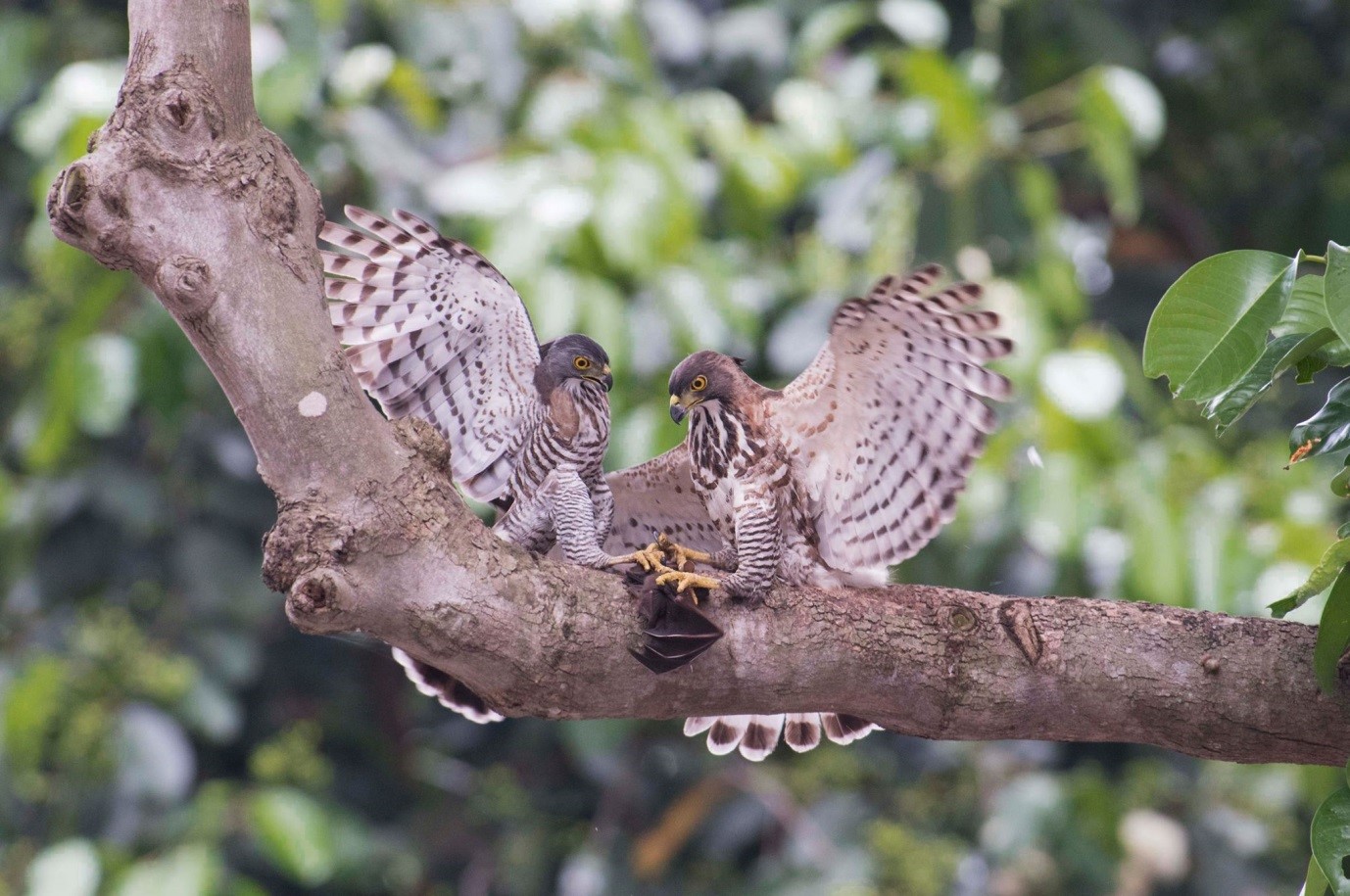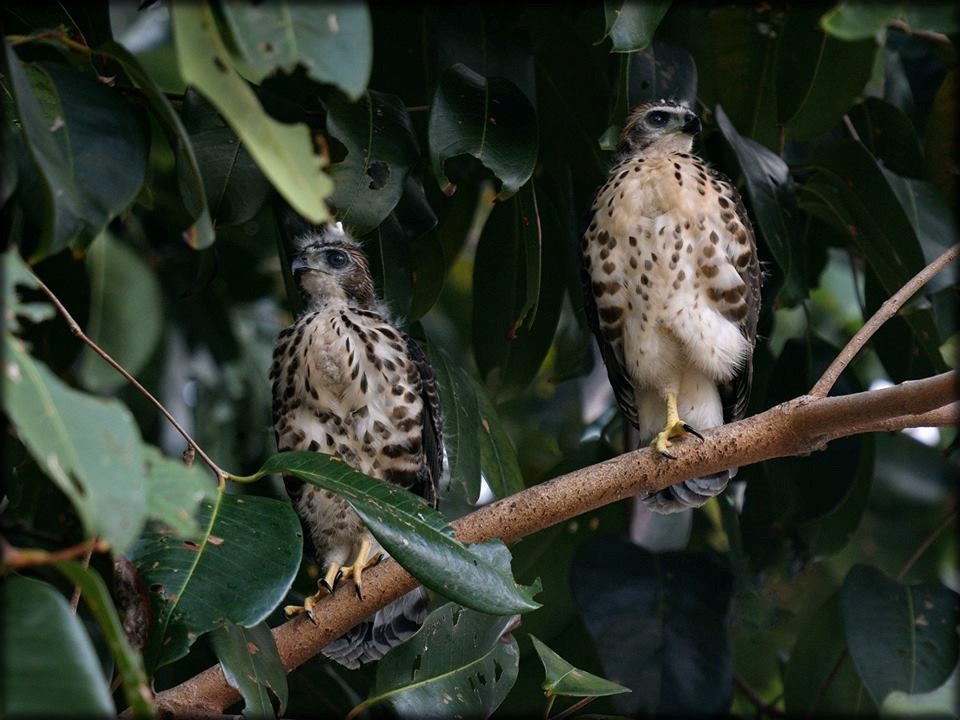On January 2017, in the heartlands of Bedok, a pair of crested goshawks decided to make a new home for their family. In this blog post, I would like to share a few photos taken by our local nature photographers and also discuss how this bird has managed to thrive in the urban environment.
The crested goshawk, Accipiter trivirgatus, is a resident raptor in Singapore with a range that extend from South to Southeast Asia. Growing up to 43 cm, some diagnostic features include a long crest and a buff vent. The Crested Goshawk usually resides and breeds in lowland forests and woodlands.
In this urban ecology special, our feathered friends managed to nest successfully in the urban environment in a tall tree adjacent to a HDB right in Bedok North.
Photograph by: GaoJian LiuJia (facebook)
In order to nest successfully, a few conditions have to be met. One of them is an appropriate nest site. Thanks to our nation-wide urban greenery plan, we see many tall trees in our city, thereby providing refuge and shelter to build a nest. This, along with the many shrubs in the vicinity, ensures that nesting materials can be obtained conveniently and easily.
Another condition is a convenient food source for both parents and the chicks. Our urban biodiversity is very much made up of ‘pest’ species like crows, Javan mynas and pigeons. Would these pest birds be an ideal diet for our goshawks?
Photograph by: Adrian Tan (facebook)
From the photographs taken by our nature photographers above and many more on the Internet, it can be seen that the main diet of these goshawks are Javan mynas and fruit bats. These animals are very common in our urban landscape, possibly increasing hunting success.
Photograph by: Tony Chua (facebook)
With such an abundance of food , little threat of predation on both eggs and chicks (the domestic cats couldn’t climb up such a high tree) and nest defence by the parents, the two chicks successfully fledged and were taught to preen and hunt by their parents.
As the juveniles were learning to fly for the first time, there were many occasions when they fell to the ground. This caused quite an excitement among the goshawks’ human neighbours as they were able to witness this important moment of a fledging’s life. Many members of the general public would have never seen a crested goshawk before, and to see their life-cycle first hand was indeed a delight! From the photograph below we see the goshawk’s neighbours of all ages curiously fascinated by its presence and yet keeping a distance from it (possibly instructed by our nature photographers). However, with the crowd swarming a single bird, would the young goshawk be heavily stressed out?
Photograph by: Jeremiah Loei (facebook)
Hopefully, this successful nesting in the heartlands reminded many Singaporeans that we do have wildlife thriving in our tiny island. In the case of the goshawks, it shows that wildlife can indeed coexist with people in the urban environment, and breed successfully due to the year-round abundance of prey and low predation risk. I also hope that this nesting event raises awareness about conserving the wildlife we have in Singapore and help us appreciate the existence of natural landscapes even in our heavily urbanised environment.
*edit*
A recent study by Lin et al. (2015) also found increased breeding success by crested goshawks in the urban environment in Taiwan. Similar to our local goshawks, factors that improve breeding performance include lower predation, high food supply and shelter from inclement weather. They even found that the urban environment advances the goshawks’ breeding schedule, coincidently avoiding the rainy season. The crested goshawk could be adapting fantastically to the new urban environment globally.
You can read the paper here: http://web.ntnu.edu.tw/~treehopper/lib/publications_lib_pdf/accipiter_et_al_2015.pdf



